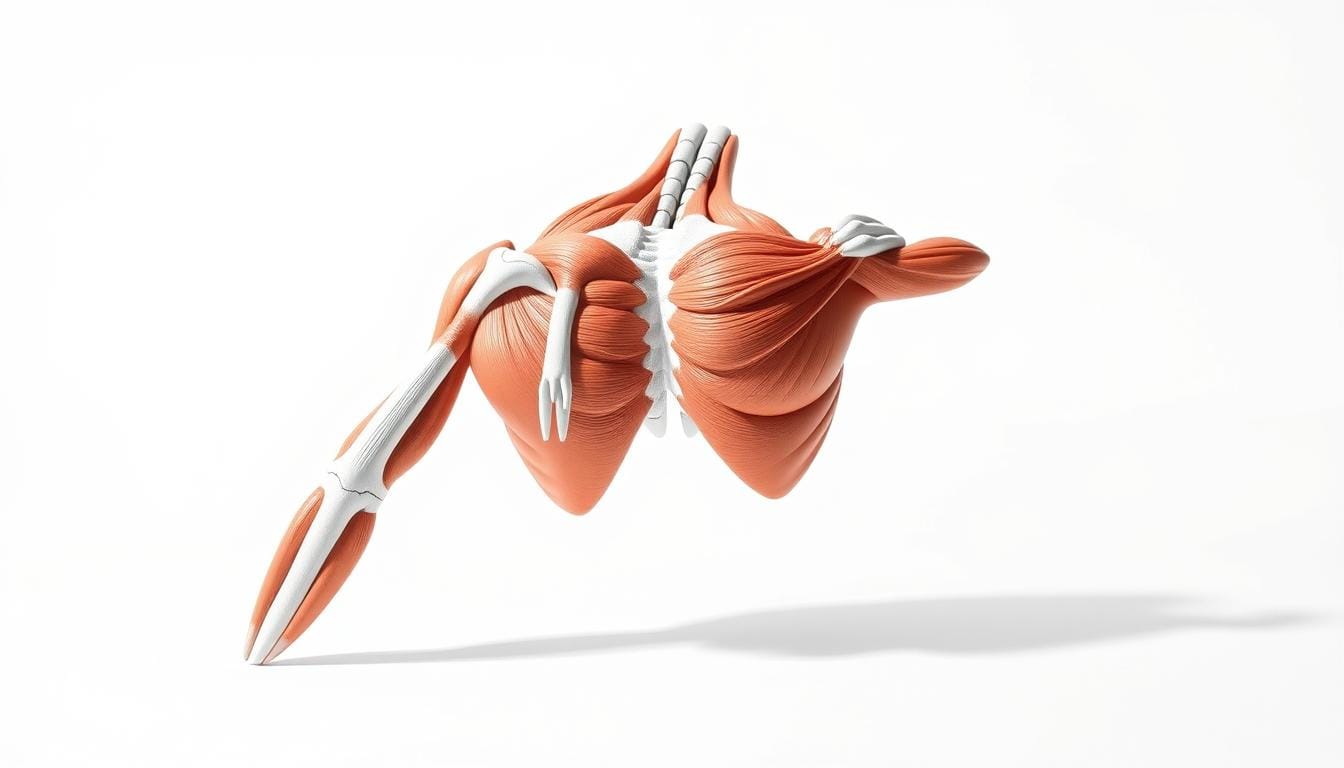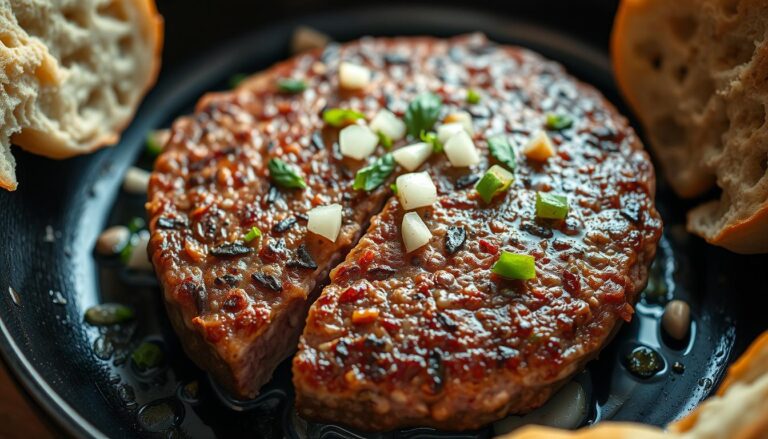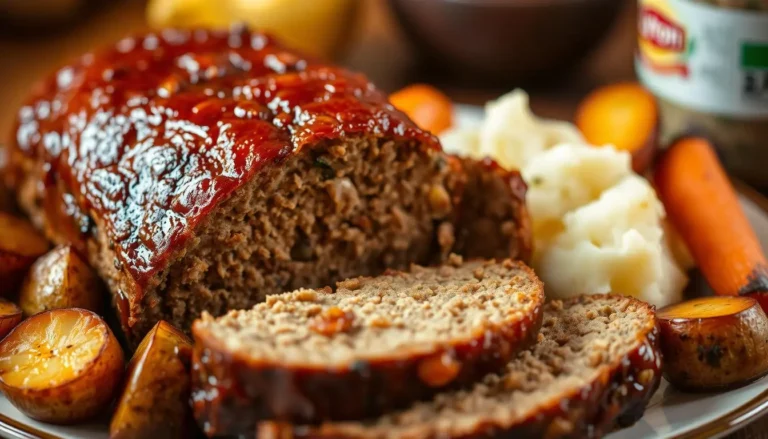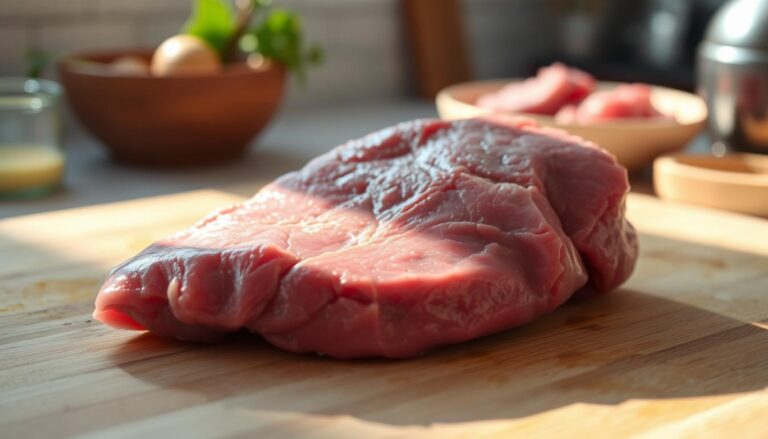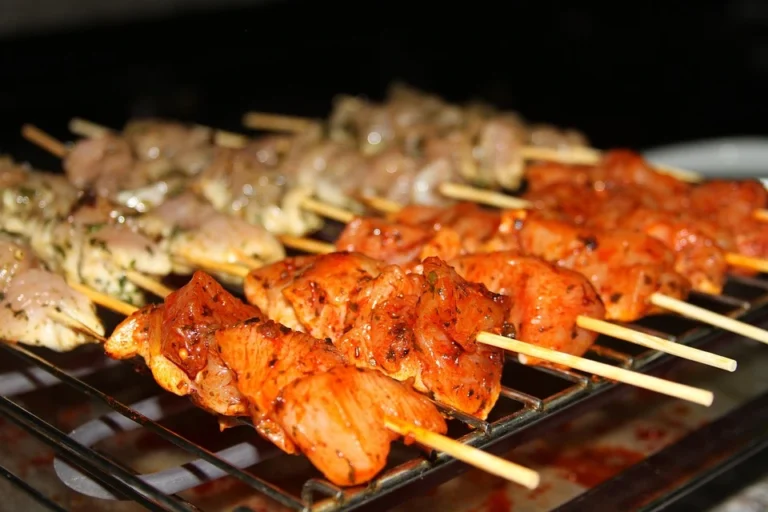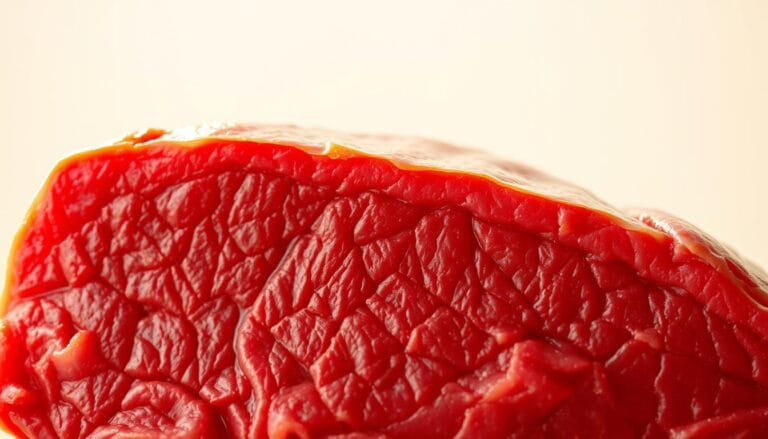Terrace Major: Everything You Need to Know about it
Table of Contents
Terrace Major: Everything You Need to Know about it
Ever thought about the muscle that helps move your shoulders? The terrace major muscle is often ignored, but it’s key to understanding our bodies and fixing injuries.
When you dive into anatomy, you’ll see the terrace major’s importance. It’s not just for its role in our bodies. It’s also a prized cut of beef in cooking. This makes it a hot topic that connects health and food.
Learning about the terrace major can boost your anatomy knowledge and cooking abilities. This guide will cover its anatomy, role, and importance in medicine and cooking.
Key Takeaways
- Understand the anatomy and function of the terrace major muscle.
- Learn about common injuries and rehabilitation techniques.
- Discover the culinary significance of the terrace major as a cut of beef.
- Explore how knowledge of this muscle can enhance your cooking skills.
- Gain insights into the importance of the terrace major in human anatomy.
What is the Terrace Major Muscle?
Understanding the teres major is key for both doctors and fitness fans. The teres major muscle is a thick, oval-shaped muscle in the shoulder area. It helps with shoulder movement and keeping it stable.
Anatomy of the Terrace Major
The teres major muscle has a unique shape that helps it work well. It starts at the scapula’s lower angle and ends on the humerus. The lower subscapular nerve, a part of the brachial plexus, powers it. This nerve is vital for the muscle’s role in moving the arm.
This muscle works with others in the shoulder to help with many movements. Its structure makes it important for the shoulder’s stability and movement.
Location in the Human Body
The teres major muscle is in the back of the shoulder. It’s near the latissimus dorsi and teres minor muscles. This spot makes it key for shoulder and arm stability.
Interestingly, “teres major” is also a term for a beef cut. It’s from the cow’s shoulder and is tender but less expensive than the tenderloin.
Functions of the Terrace Major
The teres major muscle is key in the shoulder area. It helps with moving the arm inward and bringing it closer to the body. It works with other muscles to help the shoulder joint move in complex ways.
Role in Shoulder Movement
The teres major muscle is important for shoulder movements. It helps with moving the arm inward and bringing it closer. It works with the latissimus dorsi to help with a variety of movements, from lifting to sports actions.
Key Actions of Teres Major in Shoulder Movement:
- Internal rotation of the arm
- Adduction of the arm
- Assisting in extension of the arm
Contribution to Arm Stability
The teres major also helps keep the arm stable. It works with other muscles to keep the humerus in the right place in the shoulder joint. This helps prevent injuries.
The importance of teres major in arm stability is like a teres major cut of beef in a recipe. It provides a stable base that makes the dish better.
| Movement/Action | Primary Muscles Involved | Role of Teres Major |
|---|---|---|
| Internal Rotation | Teres Major, Subscapularis | Primary contributor |
| Adduction | Teres Major, Latissimus Dorsi | Primary contributor |
| Extension | Latissimus Dorsi, Teres Major | Assisting muscle |
Knowing how the teres major works is key for athletes, physical therapists, and anyone wanting to improve shoulder performance. It helps in understanding how to move the shoulder and keep the arm stable. This knowledge helps in creating better exercise plans and rehab programs.
Differences Between Terrace Major and Terrace Minor
It’s important to know the differences between Teres Major and Teres Minor for shoulder health. Both muscles are part of the shoulder, but they work and look differently.
Anatomical Distinctions
The Teres Major and Teres Minor muscles are not the same, despite their similar names. The Teres Major is bigger and starts from the scapula’s lower corner, attaching to the humerus. The Teres Minor is smaller and starts from the scapula’s side, also attaching to the humerus but in a different spot.
Key anatomical differences include:
- Size: Teres Major is generally larger than Teres Minor.
- Origin: Teres Major starts from the scapula’s lower corner, while Teres Minor starts from the side.
- Insertion: Both attach to the humerus but in different places.
Functional Variations
The Teres Major and Teres Minor muscles work differently. Teres Major helps in pulling, rotating the arm inward, and moving it backward. Teres Minor mainly helps in rotating the arm outward and keeping the shoulder stable.
Their distinct functions contribute to:
- Shoulder stability: Both muscles help keep the shoulder stable, but in different ways.
- Arm movement: Teres Major is key for pulling and throwing, while Teres Minor is important for rotational movements.
Knowing these differences helps in diagnosing shoulder injuries and creating effective recovery plans.
Common Injuries Related to the Terrace Major
It’s important to know about teres major injuries to prevent and treat them well. This muscle, like others, can get hurt, mainly from doing the same thing over and over or lifting heavy things.
Signs and Symptoms
Spotting teres major injuries early is key. Look out for pain in the back of the shoulder, weakness in the arm, and pain when moving in certain ways. If it’s bad, you might feel your strength drop or get sharp pain while doing things.
Risk Factors
There are things that make you more likely to hurt your teres major. These include bad posture, muscle imbalances, too much use, and not warming up before working out. People who play sports like baseball or tennis, where you move your arms a lot, are at higher risk.
| Risk Factor | Description | Prevention Strategy |
|---|---|---|
| Poor Posture | Abnormal shoulder alignment | Maintain good posture, exercise regularly |
| Muscle Imbalances | Unequal strength between muscles | Engage in balanced strength training |
| Overuse | Excessive repetitive strain | Gradually increase activity level, allow recovery time |
The beef teres major cut is soft because it doesn’t get worked hard in cows. Knowing how this muscle works in people helps us take care of it and enjoy its culinary counterpart.
Rehabilitation and Recovery for Terrace Major Injuries
Recovering from a teres major injury needs a careful plan. This plan helps you get back to full strength and avoid future problems. It makes sure you can move your shoulder and arm well again.
Best Practices for Healing
Start with rest, ice, compression, and elevation (RICE) in the first stages. This helps with pain and swelling. Later, focus on moving better and getting stronger.
RICE Principle:
- Rest: Stay away from things that make the injury worse.
- Ice: Ice helps with pain and swelling.
- Compression: A bandage can help with swelling.
- Elevation: Keep the area higher than your heart to reduce swelling.
When you’re healing, start with simple movements. Then, add exercises to make the muscles stronger.
“Rehabilitation is a critical component of recovery from teres major injuries, enabling individuals to regain full function and return to their normal activities.”
Recommended Exercises
Exercises are key in healing teres major injuries. Start with easy movements. Then, move to exercises that make the muscles stronger.
| Exercise | Purpose | Repetitions |
|---|---|---|
| Arm Circles | Improve range of motion | 10-15 |
| Resistance Band Pulls | Strengthen teres major | 12-15 |
| Wall Slides | Enhance shoulder mobility | 10-12 |
Do these exercises right to avoid more harm. A doctor or physical therapist can help you do them correctly.
Rehabilitation is like following a recipe for the best results. Stick to the plan and do the exercises as suggested. This way, you can fully recover from teres major injuries.
Exercise and the Terrace Major
Exercises can really boost the strength and flexibility of your teres major. This improves your shoulder’s function. Just like a grilled teres major steak needs the right techniques, working out this muscle requires focus on form and function.
Strengthening Exercises
To make your teres major stronger, add specific exercises to your routine. Here are some good ones:
- Rows: This exercise works many muscles, including the teres major. You can use a rowing machine or do bent-over rows with dumbbells.
- Pull-downs: Lat pull-downs are great for strengthening the teres major. Use a wide grip to engage this muscle more.
- Rotational Movements: Rotational exercises, like cable rotations, also strengthen the teres major.
Stretching Techniques
Keeping the teres major flexible is key to avoiding injuries and keeping your shoulder moving freely. Here are some stretches to try:
- Cross-body Arm Pulls: Hold one arm straight out and use the other to pull it across your body. This stretch targets the teres major and boosts flexibility.
- Doorway Stretches: Stand in a doorway with your arm up and hand on the doorframe. Lean to the side to stretch your shoulder and teres major.
By adding these exercises and stretches to your routine, you can keep your teres major strong and flexible. This will improve your shoulder health and performance.
Importance of Stretching the Terrace Major
Stretching the teres major can greatly improve your shoulder health. It’s not just a bonus but a key part of keeping your shoulders working well. The teres major helps with shoulder movement and keeping it stable. Being flexible in this muscle can affect your physical performance and comfort.
Benefits of Flexibility
Being flexible in the teres major has many advantages. It can improve your range of motion, reduce injury risk, enhance posture, and boost athletic performance. A flexible teres major makes the shoulder complex work better, leading to smoother movements.
Also, it helps keep your posture right by aligning the shoulder joint. This can prevent muscle and joint strain, lowering the chance of chronic pain or injuries.
How to Properly Stretch
To stretch the teres major right, you need to know its anatomy and how it’s positioned. The muscle goes from the scapula’s lower edge to the humerus. Stretching it well means using the right stretch direction and force.
A good stretch for the teres major is the doorway stretch or cross-body stretch. For instance, to do a doorway stretch, stand in a doorway with your arm up and hand on the doorframe. Lean to the side until you feel the stretch in your teres major. Hold for 15-30 seconds and do it 2-3 times.
- Focus on proper technique to avoid injury.
- Start with gentle stretches and gradually increase intensity.
- Stretch regularly to maintain flexibility.
How to Identify Terrace Major Issues
Spotting teres major problems early is key to keeping your shoulder healthy and working well. The teres major muscle is vital for moving your shoulder and keeping your arm stable. It’s important to catch any issues before they get worse.
Self-Assessment Techniques
There are simple ways to check if you have teres major issues. Try rotating your shoulders while standing with your arms at your sides. If you feel pain or discomfort, it might be a sign of a problem.
Another way is to lift your arm against resistance. This can show if the teres major muscle is weak or strained.
If you feel pain or weakness when moving your arm, it could mean you have a teres major issue. Also, gently press on the area around your teres major muscle to check for tenderness. If you find a lot of tenderness or pain, see a doctor for a check-up.
When to Seek Medical Attention
While checking yourself can help spot problems, sometimes you need to see a doctor. If you have severe pain, significant weakness, or persistent discomfort that doesn’t get better with rest, go see a healthcare professional. Also, if you notice swelling, bruising, or any unusual changes in your shoulder, get it checked out.
Just like a chef picks the best beef teres major for cooking, you should look after your teres major muscle. Being proactive and noticing signs of trouble early can help prevent bigger injuries.
The Role of the Terrace Major in Sports
The teres major muscle is key in many sports, like throwing and overhead actions. Athletes in different sports count on it for top performance.
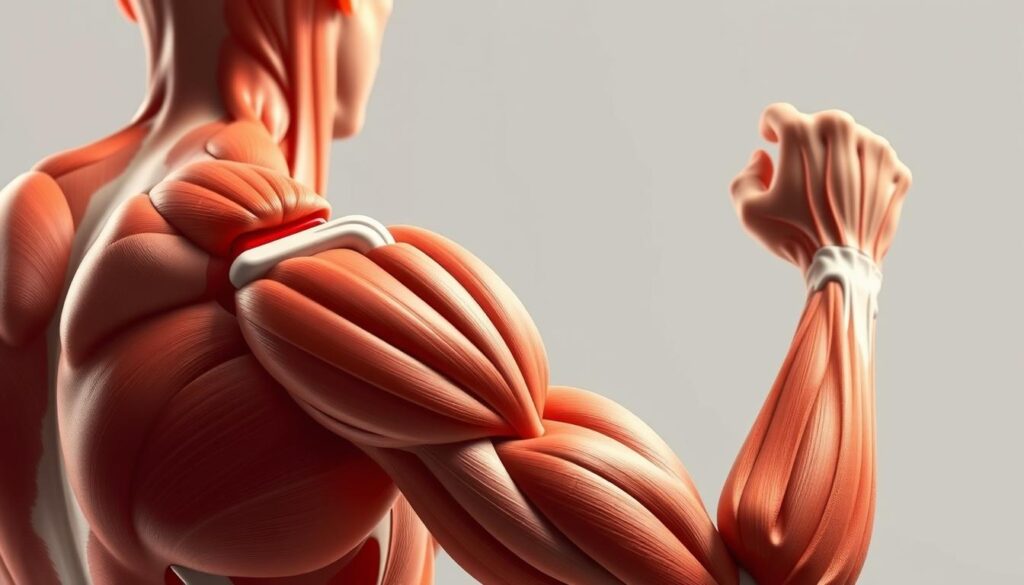
Impact on Athletic Performance
A strong teres major muscle is vital for peak sports performance. It helps stabilize and move the shoulder joint. This lets athletes perform at their highest level.
The teres major works with other muscles for throwing, pulling, and lifting. Its strength and flexibility are key for efficient movement.
Specific Sports Requiring Strong Teres Major Muscle
Many sports need a strong teres major muscle, including:
- Swimming: The teres major is used in strokes like freestyle and backstroke.
- Baseball: Pitchers use their teres major for throwing.
- Tennis: The teres major is used in serving and overhead shots.
- Rock Climbing: Climbers use it for pulling and supporting their body.
- Rowing: Rowers use it during the pulling phase of their stroke.
Just as a good teres major recipe needs the right ingredients, athletes must balance their training. By focusing on the teres major, athletes can improve their performance.
Common Myths About the Terrace Major
There’s a lot of wrong information about the teres major. This can hurt your shoulder health and make training less effective. The teres major muscle is key for shoulder movement and keeping the arm stable. Yet, it’s often not understood well.
Debunking Misconceptions
Many think the teres major is less important than other shoulder muscles. But, it’s vital for movements like adduction and rotation. Another wrong idea is that it only matters for certain athletes. In truth, anyone who is active can gain from knowing and strengthening their teres major.
Understanding the True Facts
The teres major is not just about muscle health. It’s also linked to the grilled teres major cut of beef. Even though the muscle and the meat cut are not related, they share a name. Knowing the real facts about the teres major helps you make better choices for your shoulder health and training.
Nutrition and Muscle Health
To keep your terrace major muscle healthy, focus on the right foods. A balanced diet is key for muscle growth and repair. This muscle is important for shoulder movement and stability.
Foods Beneficial for Muscle Development
Protein is essential for muscle health. Include lean meats, fish, eggs, and dairy in your meals. Also, eat complex carbs like whole grains, fruits, and veggies for energy and muscle support. Don’t forget about magnesium, potassium, and vitamins for muscle health.
Here are some foods good for muscles:
- Lean proteins: chicken, turkey, fish
- Complex carbohydrates: brown rice, quinoa, sweet potatoes
- Fruits and vegetables: berries, leafy greens, bell peppers
Importance of Proper Hydration
Drinking enough water is vital for muscle function. Dehydration can hurt your performance and increase injury risk. Drink water before, during, and after exercise to stay hydrated. Aim for at least eight glasses of water a day, but adjust based on your activity and climate.
To stay hydrated:
- Drink water regularly throughout the day
- Monitor your urine output and color
- Adjust your hydration based on your activity level and climate
Eating well and staying hydrated supports your terrace major muscle. This improves your performance and lowers injury risk.
Tips for Maintaining a Healthy Terrace Major
To keep your teres major muscle healthy, follow a care routine. This includes daily habits and strength training. These practices help keep your shoulders healthy and prevent injuries.
Daily Care Practices
Start by keeping good posture. This reduces strain on the muscle. Also, make sure your workspace is set up right to help your teres major.
Adding simple exercises to your day can also help. Shoulder rolls and scapular squeezes strengthen the area and improve stability.
“The teres major muscle plays a key role in shoulder movement and stability. Proper care and maintenance are essential for optimal function.”
Incorporating Strength Training
Strength training is key for a healthy teres major. Do exercises like rows and lat pulldowns to target the muscle. It’s also important to balance strength to avoid injuries.
| Exercise | Repetitions | Sets |
|---|---|---|
| Rows | 12-15 | 3-4 |
| Lat Pulldowns | 12-15 | 3-4 |
Strength training strengthens your teres major and improves muscle health. Just like a quality beef teres major needs care, your muscle does too.
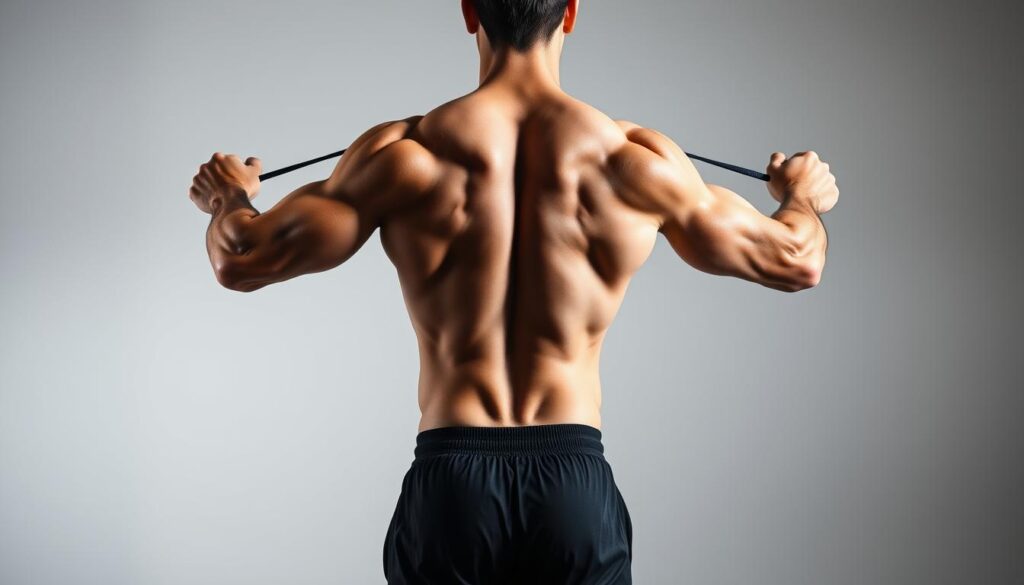
Follow these tips and keep a consistent care routine. This will help your teres major stay healthy. A strong teres major is important for your shoulders and athletic performance.
Conclusion: The Importance of the Terrace Major Muscle
Understanding the teres major muscle is key for good health and function. This muscle is important for moving your shoulders and keeping your arms stable.
Key Takeaways
The teres major muscle’s anatomy, function, and injuries are important to know. Regular exercise, good nutrition, and quick action help keep it healthy.
Maintaining Muscle Health
Caring for your teres major muscle is like making a great teres major recipe or grilling a perfect steak. It needs your attention and action. Taking care of it improves your overall health and lets you move without pain.
Strengthening the teres major with exercises, eating right, and daily care boosts your muscle health. This effort keeps you physically fit and enhances your life quality.
FAQ
What is the teres major muscle?
What is the difference between teres major and teres minor?
What are common injuries related to the teres major?
How do I rehabilitate a teres major injury?
What are some exercises to strengthen the teres major?
How do I cook a teres major steak?
What are the benefits of stretching the teres major?
How do I identify teres major issues?
What sports require a strong teres major muscle?
What nutrients are beneficial for teres major muscle health?
How can I maintain a healthy teres major?
For more cooking tips, stay connected with us. We also recommend the cookbook Skinnytaste Simple: Easy, Healthy Recipes with 7 Ingredients or Fewer
For more Recipes about Steak ?
Did You try our recipe ?
There are no reviews yet. Be the first one to write one.
